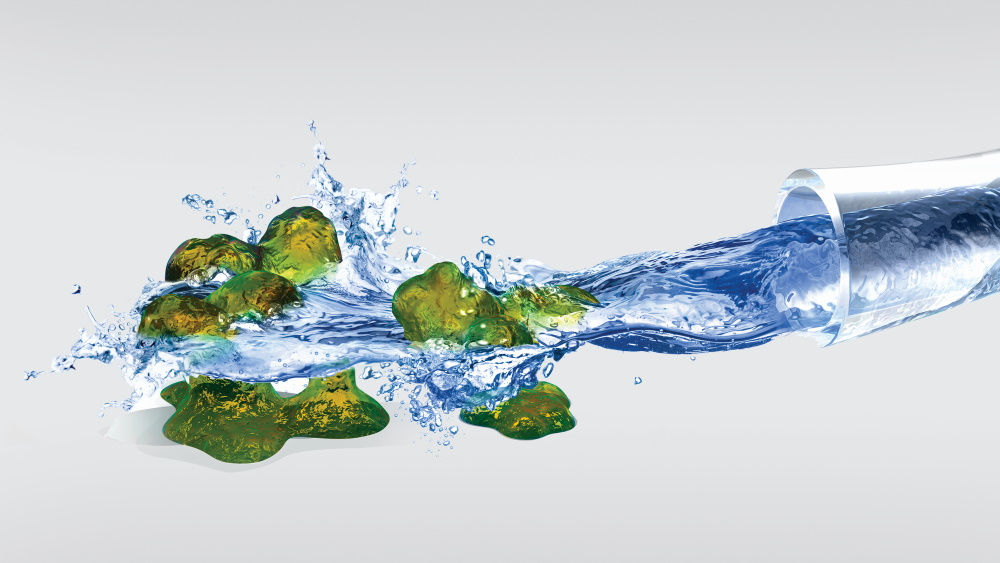You have successfully logged out.
Not registered yet?
Catheter maintenance
The risk of catheter encrustation or CAUTI
One of the possible solutions for patients with incontinence or chronic urinary retention is bladder drainage by indwelling urinary catheterization. Nevertheless, indwelling urinary catheters are not free from complications. Known complications are catheter obstructions (i.e. caused by encrustation) which can lead to frequent catheter changes. More catheter changes may increase the risk of catheter associated-urinary tract infection (CAUTI). Bacteria may enter the catheter and adhere to the catheter or the drainage bag. Contaminated catheters can develop colonies and biofilm. Catheter encrustations may occur and reach clinical significance, e.g. by obstructing the urine outflow through the catheter.
Medical Professional
This information is meant for medical professionals only. Please confirm that you are a medical professional before accessing the information.
Confirm Yes, I am a health care professional. Cancel No, I am not a health care professional.Uro-Tainer®
Catheter maintenance
Catheter maintenance solutions have been developed to remove biofilm, encrustations, debris and mucus to maintain the catheter and reduce frequency of catheter changes.
Available catheter maintenance solutions are: saline, solutions with citric acid, or solutions with ancillary antimicrobial effect like Polihexanide. Catheter maintenance solutions can be used as part of a management plan aiming to reduce the development of catheter-associated complications and hereby reducing the risk of encrustation or trauma by catheter removal.
Regular catheter maintenance can help minimise the risk of bacterial colonization, can help to reduce deposits and to prevent debris formation.

Causes of catheter blockages
- Kinked catheter drainage tube to urine collection bag
- Catheter drainage opening is closed by the bladder wall
- Catheter balloon not sufficiently or overinflated
- Incorrect placement or fixation of the catheter
Did you know that research has shown that calcification occurs in 50% of indwelling catheters?[1] Calcification is the most common cause of blocked catheters.[2] A biofilm develops on the catheter due to bacteria in the urine, such as Proteus mirabilis. This bacterium produces the enzyme urease and splits urea into ammonia and carbon dioxide. This results in an increase in pH which makes the urine alkaline and creates an ideal environment for the development of crystals, for example, magnesium ammonium phosphate and calcium phosphate.
Bacterial colonization of urinary catheters is promoted by the formation of biofilm, which protects the microorganisms, making them difficult to combat
.[3],[4],[5] These bacteria are particularly difficult to remove because they can adhere strongly to the surface of the catheter (bacterial colonization is the cause of recurrent urinary tract infections, among other things).
Urinary catheters can become blocked by debris. Adequate fluid intake promotes a good natural flush and can help reduce debris formation.
Causes of debris formation
- Urothelial cells of the bladder wall
- Tumor cells
- Infection
- Blood from disease, urological surgery, or trauma
How do I check the cause of the blockage?
Check the urine pH regularly, as alkaline urine (indicated by pH> 6.8) is a strong indication of possible calcification. pH can be measured with pH strips.
Bacteria in the urine (such as Proteus mirabilis) in combination with alkaline urine create ideal conditions for the development of calcification.[5]
If it is suspected that a blockage is due to calcification, it is recommended to check the catheter by cutting it open along its length after it has been removed.
Treatment of calcification
If the blockage of the catheter is due to calcification, treatment with Uro-TainerTwin Suby G (for crystal formation and slight calcification) or Uro-Tainer Twin Solutio R (for stubborn calcification) is the appropriate solution.
Research shows that a rinse with a small amount of Suby G or Solutio R, immediately followed by a second rinse with a small amount, is significantly more effective at dissolving calcification than one rinse with a larger amount.[6]
Uro-Tainer Twin has two chambers of 30 ml each. You have the option of giving two separate flushes in a row without disconnecting the closed system (infection prevention). A smaller amount of solution is also more comfortable for the user.
Treatment of bacterial colonisation
Studies have shown that polyhexanide prevents the attachment of bacteria and the formation of biofilm.[7] Uro-Tainer Polyhexanide is a catheter maintenance solution to reduce bacterial colonization in the catheter, as well as a mechanical flush for debris in combination with biofilm formation. Bacterial colonization of urinary catheters is promoted by the formation of biofilm, which protects the microorganisms, making them difficult to combat.[3], [4], [5]
Standard therapeutic doses of antibiotics may have little or no effect on the bacteria in a biofilm. Physical removal by rinsing is the best method to remove a biofilm, and regular cleaning is required to prevent the biofilm from growing back.[3] Regular rinsing with the Uro-TainerPolyhexanide prevents the formation of a biofilm in and on the indwelling catheter.
Treatment of debris formation
If only debris formation is the cause of the catheter blockage, Uro-Tainer NaCl 0.9% is a good solution to mimic a natural flush. This isotonic fluid has a purely mechanical effect. A mechanical cleaning of the catheter with Uro-Tainer NaCl 0.9% should be administered passively (by gravity) in order to related risks:
- Ascending urinary tract infections
- Too much pressure on the bladder wall, causing irritation
- Urothelial cells detaching from the bladder wall
- Bladder cramps
- Leakage along the catheter
Our product portfolio
Product profile and areas of use:
- Reduce risk of bacterial colonization: Uro-Tainer® Polihexanide
- Reduce encrustation: Uro-Tainer® Suby G / Uro-Tainer® Solutio R
- Remove deposits: Uro-Tainer® Polihexanide / Uro-Tainer® NaCl
[1] Newman DK (2007) The indwelling urinary catheter: principles for best practice. Journal of Wound, Ostomy and Continence Nursing; 34: 6, 655-661.
[2] Stickler DJ (2008) Bacterial biofilms in patients with indwelling urinary catheters. Nature Clinical Practice Urology; 5: 11, 598-608.
[3] Phillips L, Wolcott RD, Fletcher J, Schultz GS. Biofilms made easy.www.woundsinternational.com 2010; 1(3): 1-6.
[4] Stoodley P, Stoodley P, Sauer K, Davies DG, Costerton JW. Biofilms as complex differentiated communities. Annu Rev Microbiol 2002; 56: 187-209.
[5] Hall-Stoodley J, Costerton JW, Stoodley P. Bacterial biofilms: from the natural environment to infectious diseases. Nat Rev Microbiol 2004; 2(2): 95-108.
[6] Getliffe K.A., Hughes S.C., Le Claire M. (2000) The dissolution of urinary catheter encrustation. British Journal of Urology International 85: 60-64
[7] Bradbury S, Fletcher J. Prontosan® made easy. www.woundsinternational.com 2011; 2(2): 1-6.
[8] C.O. Okorie, N.W. Nwigboji, U.N. Nwaedu, N.N. Ekem (2014) Urinary catheterization diary a useful tool in tracking causes of non-deflating Foley catheter: African Journal of Urology


